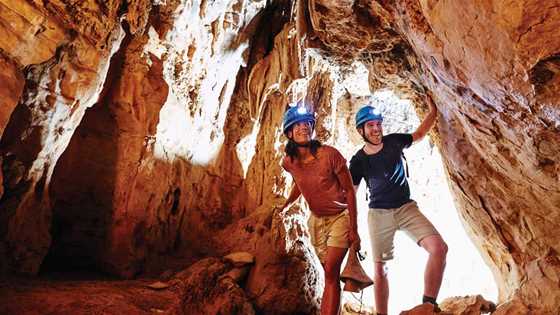West Australian artist Paul Kaptein manipulates wood to create artworks that transcend time and space.
Defying the laws of physics, Paul Kaptein's sculptures twist, contort and bend in such ways that it's hard to believe they're made entirely of wood. Take and in the endless sounds there came a pause, for example. From the side, the artwork appears to be a monk sitting in meditation. From the front, it takes on the physical embodiment of a mirage.
"[The sculpture] is ruptured by a kind of analogue distortion that has been pivotal in shaping my practice," says Paul. "My recent show with Turner Galleries here in Perth included this work and a few others, utilising a glitch aesthetic to create a sort of tension between stillness and movement, which I'm continuing to explore."
This 'glitch aesthetic', seen across Paul's works, usually comes in the form of odd distortions or holes, varying in shape and depth, which he uses to examine our relationship with time and, more specifically, the right now.
"I've been exploring the idea of the present moment as a remix of past, present and future potentialities," he says. "The way we are all surrounded by wood, the way it connects us through time, its ubiquity, its aliveness… it has a presence other materials lack. Just about every culture on Earth has incorporated wood and carving into their rituals and ceremonies."
In that regard, says Paul, the ancient practice of woodcarving collapses the distance between the historical and the contemporary. The artist's very first wooden sculpture – and in the endless pauses there came a sound – puts this theory to the test. A carved character that melds Greek mythology with 21st century culture, it fuses together two different moments in time.
"My first carved work was made for Sculpture by the Sea, and was a life-sized satyr in the guise of a sound recordist," Paul says. "The top half was contemporary, with a hoody, headphones and recording equipment, which inverted the traditional narrative of the satyr as a musician; the bottom half had a traditional satyr appearance – hairy goat legs with exposed genitals and tail.
"There was an ambiguity around what [the satyr] was recording, as well as a tension between his appearance or disappearance, rendered through gaps of differing sizes left in the work," Paul says. "I liked the tension between being and not being, as well as the sort of pixelation or glitch aesthetic, disrupting the surface and form of the sculpture."

As Paul discovered, the construction of the satyr was hard to accomplish using other materials. "Before I started using wood, I'd been working digitally for many years with video and animation, and I'd been developing a character initially not intended to have an incarnation in physical form," he says. "But some of the ideas became too compelling not to make, so I played with bio-resin and plaster moulds to produce the forms.
"One mould was pretty difficult, and I kept making a mess of it. It was through frustration I took a hammer and chisel to a piece of wood."
Years on, and Paul reveals it took him six months to complete and in the endless pauses there came a sound. Now he has honed his practice, but still admits he can spend anywhere between hours and months carving pieces of Jelutong wood into works of art.
"Nearly all work begins by laminating (glueing) the wood together into a big enough block from which to carve," explains Paul. "I usually bandsaw the outline of the work and proceed from there by hand with chisels and, ultimately, sandpaper.
"As carving is a reductive process, the less wood remaining, the more time and work involved. It is a kind of meditation, watching a block of wood gradually reduced over time."
Paul Kaptein is represented in Western Australia by Turner Galleries.


.jpg)






